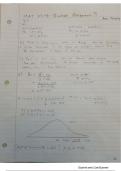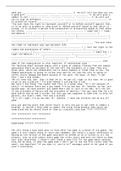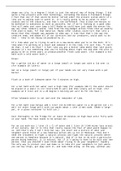University of Ottawa (U OF O )
Latest uploads at University of Ottawa (U OF O ). Looking for notes at University of Ottawa (U OF O )? We have lots of notes, study guides and study notes available for your school.
-
209
- 0
-
19
Majors at University of Ottawa (U OF O )
Notes available for the following studies at University of Ottawa (U OF O )
-
ADM 3321 1
-
Anthropology 2
-
Biochemistry 18
-
Biology 13
-
Biomedical Sciences 45
-
Boomed 2
-
Business 1
-
Business Administration 4
-
Business Marketing 9
-
Calculus 1
-
CCNA 1 1
-
Chemical Engineering 3
-
Criminology 3
-
Environmental Studies 2
-
French 10
-
French as a Second Language 7
-
GERMAN COURSE 2
-
Health Sciences 18
-
History 1
-
International Development and Globalization 4
-
Introduction to Earth Systems 1
-
Mathematics 7
-
Mathematics and informatics 18
-
Nursing 1
-
Perry: Maternal Child Care Nursing in Canada, 2nd 1
-
Personal Finance 6ce Madura 1
-
PHA 3112 1
-
Physics 12
-
PSY 3171 1
-
Psychology 1
-
Russian 1
-
Sociology 11
-
Software Engineering 3
-
Telfer School Of Management 2
Latest notes & summaries University of Ottawa (U OF O )

Assignment 2 for MAT 2379. Course by Raluca Balan
- Book & Paket-Deal
- Other
- • 9 pages's •
-
University of Ottawa•MAT 2379
-
Expect The Unexpected: A First Course In Biostatistics (Second Edition) • Raluca Balan, Gilles Lamothe• ISBN 9789813209084
-
All assignments for MAT 2379• Byashadoughty
Preview 2 out of 9 pages
Assignment 2 for MAT 2379. Course by Raluca Balan

A scanned copy of the answers for Raluca Balan's assignment for the course MAT 2379, Intro to biostatistics.
- Book & Paket-Deal
- Other
- • 7 pages's •
-
University of Ottawa•MAT 2379
-
Expect The Unexpected: A First Course In Biostatistics (Second Edition) • Raluca Balan, Gilles Lamothe• ISBN 9789813209084
-
All assignments for MAT 2379• Byashadoughty
Preview 2 out of 7 pages
A scanned copy of the answers for Raluca Balan's assignment for the course MAT 2379, Intro to biostatistics.

Objective: The goal of Chapter Summary 2 is to provide students with a concise overview of the key concepts, theories, and findings presented in a specific chapter related to social inequality. The summary is designed to help students quickly review and reinforce their understanding of the chapter's content. Description: Part 1 - Chapter Overview: The chapter summary begins with a brief overview of the chapter's main topic and focus, which could be related to a specific dimension of soc...
- Summary
- • 4 pages's •
-
University of Ottawa•SOC 2151
Preview 1 out of 4 pages
Objective: The goal of Chapter Summary 2 is to provide students with a concise overview of the key concepts, theories, and findings presented in a specific chapter related to social inequality. The summary is designed to help students quickly review and reinforce their understanding of the chapter's content. Description: Part 1 - Chapter Overview: The chapter summary begins with a brief overview of the chapter's main topic and focus, which could be related to a specific dimension of soc...

Objective: The goal of Handout 3 is to provide students with supplementary information, resources, and activities related to a specific topic in social inequality. The handout is designed to complement course lectures, discussions, and readings, helping students to deepen their understanding of the topic. Description: Part 1 - Topic Overview: The handout begins with a brief overview of the specific topic addressed, which could be related to a dimension of social inequality (e.g., economic...
- Class notes
- • 2 pages's •
-
University of Ottawa•SOC 2151
Preview 1 out of 2 pages
Objective: The goal of Handout 3 is to provide students with supplementary information, resources, and activities related to a specific topic in social inequality. The handout is designed to complement course lectures, discussions, and readings, helping students to deepen their understanding of the topic. Description: Part 1 - Topic Overview: The handout begins with a brief overview of the specific topic addressed, which could be related to a dimension of social inequality (e.g., economic...

Objective: The goal of Pre-Lab 7 is to prepare students for an upcoming lab activity related to social inequality by providing them with essential background information, guiding questions, and a brief overview of the lab's goals and procedures. Description: Part 1 - Introduction and Background: The document begins with an introduction to the topic of the lab activity, which could be related to a specific dimension of social inequality, such as economic inequality, racial and ethnic ineq...
- Case
- • 3 pages's •
-
University of Ottawa•SOC 2151
Preview 1 out of 3 pages
Objective: The goal of Pre-Lab 7 is to prepare students for an upcoming lab activity related to social inequality by providing them with essential background information, guiding questions, and a brief overview of the lab's goals and procedures. Description: Part 1 - Introduction and Background: The document begins with an introduction to the topic of the lab activity, which could be related to a specific dimension of social inequality, such as economic inequality, racial and ethnic ineq...

Objective: The goal of Answer 6 is to provide students with a comprehensive response to a question or assignment related to social inequality, helping them to understand key concepts and theories, as well as to evaluate potential solutions and interventions. Description: Part 1 - Question or Assignment Recap: The document begins with a brief recap of the question or assignment that Answer 6 is addressing. This could be a question related to one of the major theoretical perspectives, dimen...
- Class notes
- • 4 pages's •
-
University of Ottawa•SOC 2151
Preview 1 out of 4 pages
Objective: The goal of Answer 6 is to provide students with a comprehensive response to a question or assignment related to social inequality, helping them to understand key concepts and theories, as well as to evaluate potential solutions and interventions. Description: Part 1 - Question or Assignment Recap: The document begins with a brief recap of the question or assignment that Answer 6 is addressing. This could be a question related to one of the major theoretical perspectives, dimen...

Objective: The goal of Demo Activity 6 is to provide students with a hands-on experience that illustrates the concept of social inequality, helping them to visualize the impact of inequality on individuals and society. Description: Part 1 - Introduction: In this activity, the instructor provides an overview of the chosen topic related to social inequality, such as wealth distribution, educational opportunities, or access to healthcare. The instructor presents relevant data, statistics, an...
- Class notes
- • 5 pages's •
-
University of Ottawa•SOC 2151
Preview 2 out of 5 pages
Objective: The goal of Demo Activity 6 is to provide students with a hands-on experience that illustrates the concept of social inequality, helping them to visualize the impact of inequality on individuals and society. Description: Part 1 - Introduction: In this activity, the instructor provides an overview of the chosen topic related to social inequality, such as wealth distribution, educational opportunities, or access to healthcare. The instructor presents relevant data, statistics, an...

Objective: The goal of Exercise 3 is to provide students with an opportunity to apply their understanding of theories and concepts related to social inequality to a specific case study or real-world example. Description: Part 1 - Case Study/Real-World Example: In this exercise, students are provided with a case study or real-world example that highlights a particular aspect of social inequality, such as economic inequality, racial or ethnic inequality, gender inequality, educational inequ...
- Class notes
- • 5 pages's •
-
University of Ottawa•SOC 2151
Preview 2 out of 5 pages
Objective: The goal of Exercise 3 is to provide students with an opportunity to apply their understanding of theories and concepts related to social inequality to a specific case study or real-world example. Description: Part 1 - Case Study/Real-World Example: In this exercise, students are provided with a case study or real-world example that highlights a particular aspect of social inequality, such as economic inequality, racial or ethnic inequality, gender inequality, educational inequ...

Classical Theories of Inequality: Understand the ideas and contributions of Karl Marx, Max Weber, and Emile Durkheim in understanding social stratification and inequality. Major Perspectives on Social Inequality: Familiarize yourself with the key points and differences between functionalism, conflict theory, and symbolic interactionism in analyzing social inequality. Intersectionality: Grasp the concept of intersectionality and its importance in understanding how different social categorie...
- Exam (elaborations)
- • 4 pages's •
-
University of Ottawa•SOC 2151
Preview 1 out of 4 pages
Classical Theories of Inequality: Understand the ideas and contributions of Karl Marx, Max Weber, and Emile Durkheim in understanding social stratification and inequality. Major Perspectives on Social Inequality: Familiarize yourself with the key points and differences between functionalism, conflict theory, and symbolic interactionism in analyzing social inequality. Intersectionality: Grasp the concept of intersectionality and its importance in understanding how different social categorie...

The file "SOC318-R" contains a report that pertains to a particular course or project, possibly in the field of sociology or a related subject. The report may be structured into sections such as an introduction, literature review, methodology, data analysis, results, discussion, and conclusion. It may also contain additional elements like tables, figures, references, or appendices based on the project's requirements.
- Class notes
- • 3 pages's •
-
University of Ottawa•SOC 2151
Preview 1 out of 3 pages
The file "SOC318-R" contains a report that pertains to a particular course or project, possibly in the field of sociology or a related subject. The report may be structured into sections such as an introduction, literature review, methodology, data analysis, results, discussion, and conclusion. It may also contain additional elements like tables, figures, references, or appendices based on the project's requirements.
